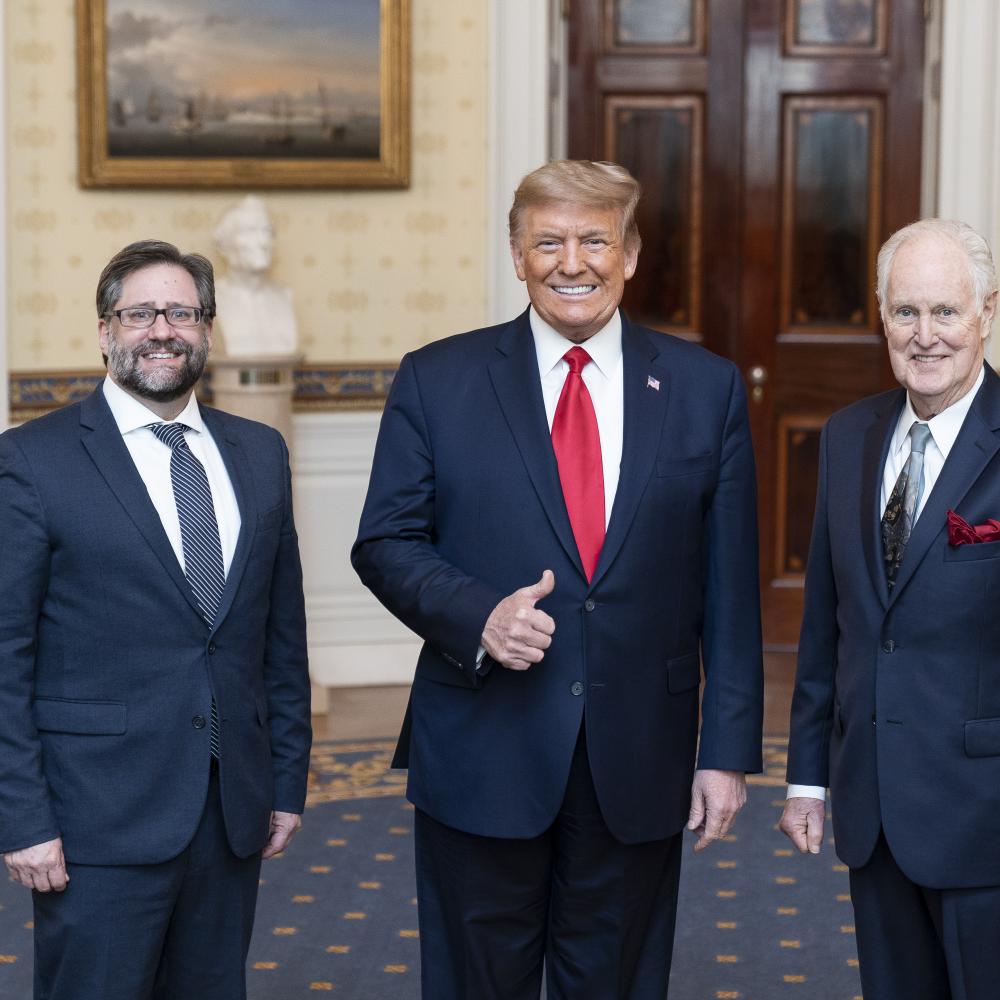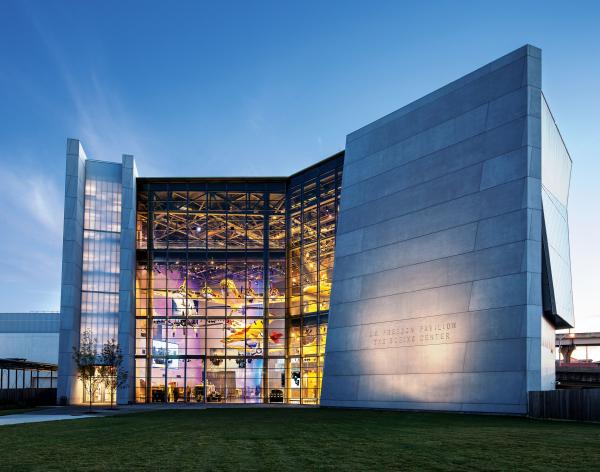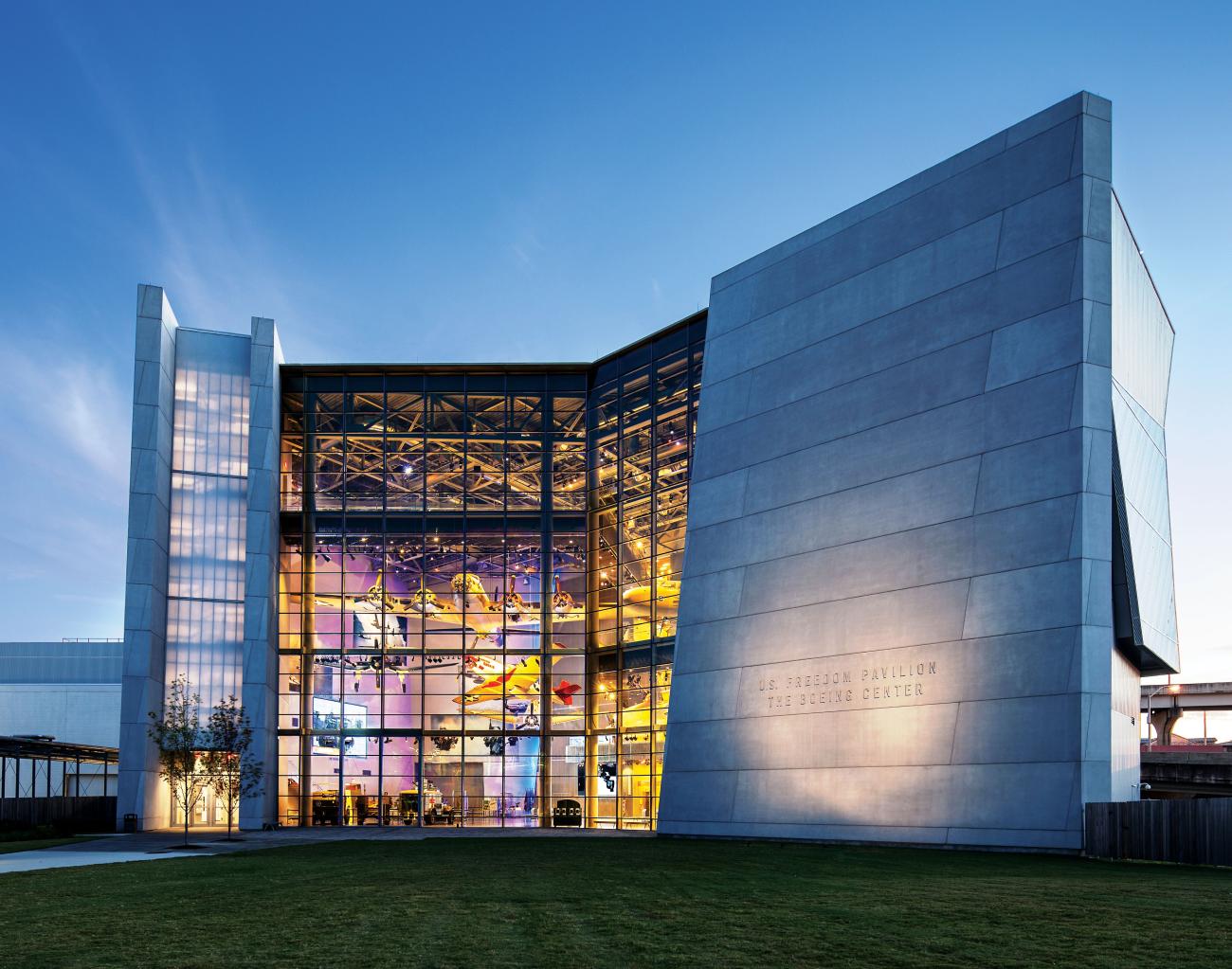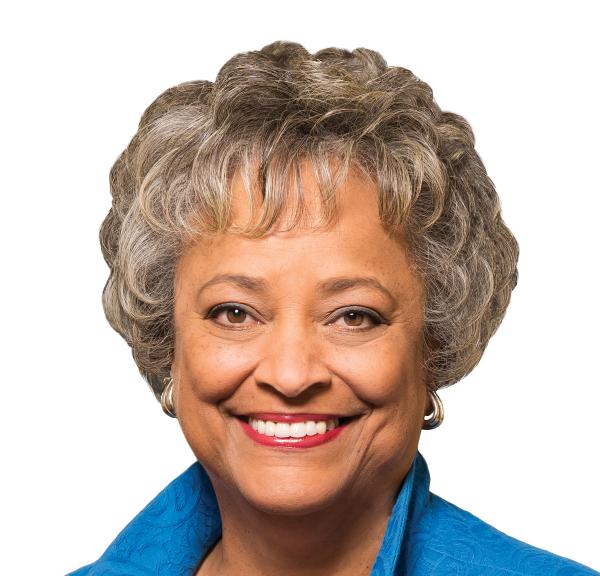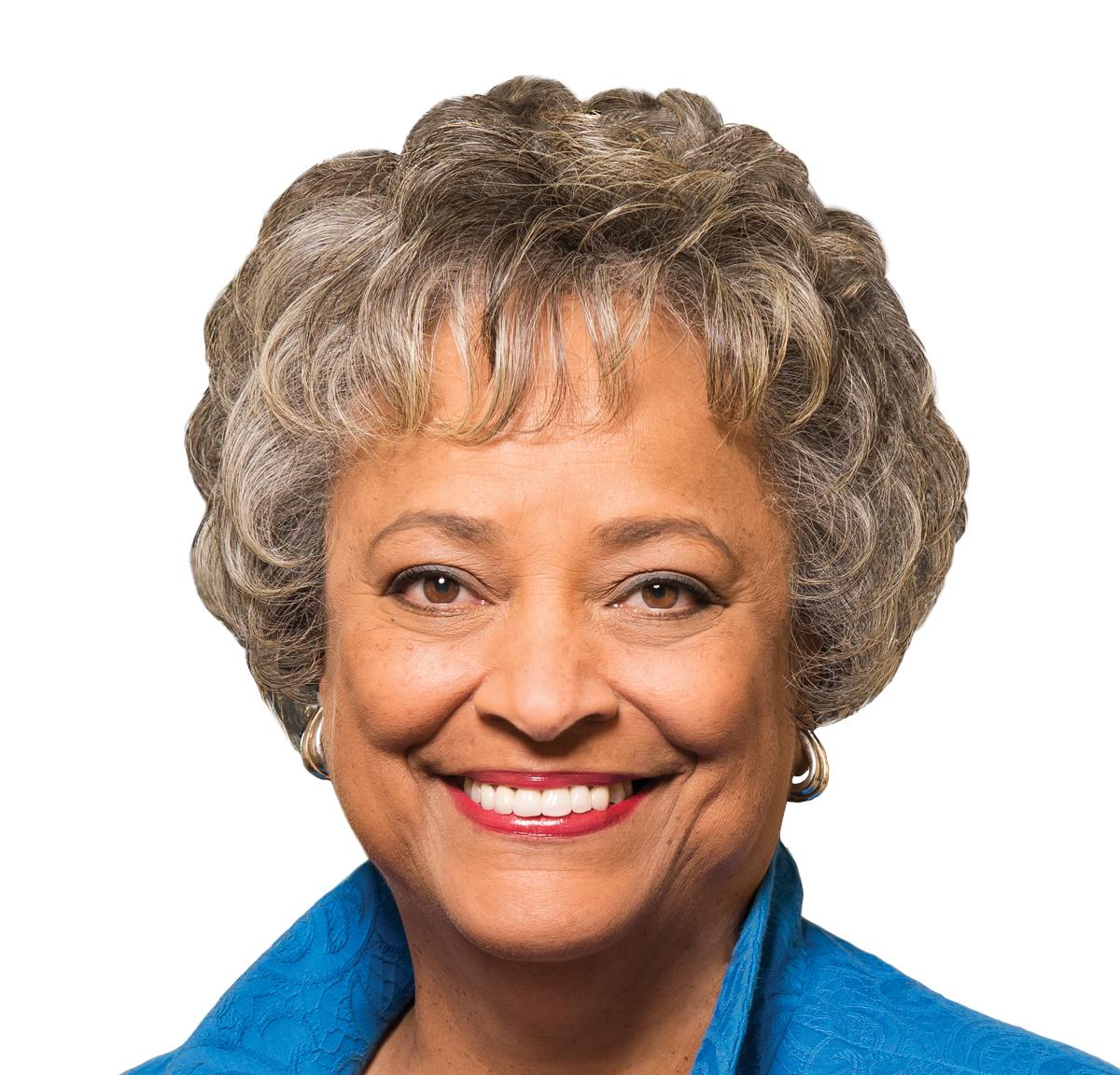On January 13, 2021, President Donald J. Trump was joined by NEH Chairman Jon Parrish Peede in a private White House ceremony to award the National Humanities Medal to a preserver of battlefields, a museum devoted to telling the story of World War II, and a public figure who fosters education for the next generation of leaders.
O. James Lighthizer, Preservationist
“. . . for his decades of work protecting thousands of acres of Civil War battlefields for future generations.”
In a long and varied career, O. James Lighthizer has assured that approximately 54,000 acres of Civil War, War of 1812, and Revolutionary War land on 144 battlefields in 24 states remain accessible to the public in perpetuity. Saving the land is the first step, he has said, next is marking it so people understand what it is, and then interpreting it so it can become, in his words, “a civics teaching tool.” After twenty years of leading the Civil War Preservation Trust, he stepped down as president in September 2020 but still works to meet the expanding goals of the newly named American Battlefield Trust.
Lighthizer, a native of Ohio, honed his administrative skills first as a member of the Maryland General Assembly and then as county executive in Anne Arundel County. In that position, he set aside farmland along the Chesapeake Bay and established a waterfront park along the South River.
After two terms as county executive, Lighthizer was appointed Maryland secretary of transportation in 1991. He received national attention for an innovative program that saved more than 4,500 acres of the state’s Civil War battlefields.
In 1999, he took the helm of the Civil War Preservation Trust, where he and his staff increased membership rolls and fundraising significantly and saved the Slaughter Pen Farm on the Fredericksburg Battlefield in Virginia. Astute in all the practicalities of the acquisition of private property to be set aside for public use, Lighthizer has been described by National Geographic as “adept at fighting many foes on many fronts all at once.”
The American Battlefield Trust, as it is now called, continues to acquire land of importance not only to the Civil War but also the Revolutionary War and the War of 1812. Looking to the future, Lighthizer says, the Trust will “judiciously expand to Indian wars.”
“How do we interpret the land we’ve saved?” he asks rhetorically and then provides an answer: “largely through technology.” Lighthizer’s wide reading of American history comes into play here. He points out, for example, that in the Revolutionary War there were fewer after-action reports than in the Civil War, making interpretations of the former all the more difficult. With the aid of historians schooled in the new tools of digital humanities, however, interpretation of Revolution-era lands becomes vastly more detailed and informed. The Trust, in fact, has long worked with historians, going back to the original organization, which was a grassroots effort led by amateurs and academics alike.
Lighthizer places a lot of confidence in the private sector to find fresh ways to keep history within the public’s gaze. If there’s no effort to keep U.S. history front and center, he fears, it can vanish from the country’s collective consciousness. “In general,” he says, “government doesn’t have the creative capacity” to fully complete the task of interpretation.
To assist in educating the public, the Trust has long sponsored teacher institutes. Place-based education can tell a compelling story about an authentic place, Lighthizer says, and in turn it inspires citizens to remain engaged in civic life. This effort has continued even during the pandemic. “Zoom has been a boon because it has forced us to be creative in the way we relate to people.”
Lighthizer and the Trust’s board leave leadership in the capable hands of David Duncan, the direct-mail specialist Lighthizer hired early on and who helped increase fundraising and membership significantly. Lighthizer himself, now in his mid seventies, spends much of his own time in retirement not too far afield (he still goes to the office a few days a week even during the pandemic), but he’ll devote more time soon to doing what he says has been his lifelong passion since he first read Michael Shaara’s Killer Angels, studying and reading about the Civil War.
By Steve Moyer, managing editor of HUMANITIES.
National WWII Museum
“. . . for its devotion to bringing to life the story of America’s greatest generation and our remarkable victory against the forces of evil.”
As a young historian in 1964, Stephen Ambrose met former president Dwight Eisenhower, who had noticed that Ambrose was living in New Orleans. That led to some thoughts about Andrew Higgins, the Crescent City boat builder who had conceived the front-loading vessels used in the D-Day landing in Normandy.
“If Andy Higgins had not designed and then built those landing craft,” Ambrose recalled Eisenhower saying, “we never could have gone in over an open beach. The whole strategy of the war would have been changed.”
Those words of Eisenhower, who had commanded the Allied forces on that fateful day in 1944, stuck with Ambrose for decades, eventually leading to an idea. Why not build a museum in New Orleans to honor D-Day’s legacy? In the 1990s, Ambrose teamed up with close friend and fellow New Orleans historian Nick Mueller to make it happen. As an author of best-selling history books, Ambrose could attract donors. Mueller’s background as an academic administrator would help steer the project to completion.
That National D-Day Museum opened in New Orleans on June 6, 2000, the fifty-sixth anniversary of D-Day. Several years later, the museum expanded its mission to memorialize the entire global conflict, and rechristened itself as the National WWII Museum.
Since opening its doors, the museum has attracted more than 7.5 million visitors. It houses more than 250,000 artifacts from the war, including planes, tanks, and the iconic “Higgins boat” that inspired Ambrose’s brainchild.
But it’s much more than a warehouse for vintage military hardware. Dynamic exhibits convey the experiences of everyone touched by the fighting, including those on the home front. There’s even a dining canteen featuring live performances of period music.
“This was a war that affected every aspect of society,” said Stephen Watson, the museum’s current president and CEO. “The weapons, materiel, and uniforms are obviously important. But we also discuss the millions of women who entered the work force, the internment of Japanese Americans, the segregation of the military. When people come to the museum, they get a sense of the immense nature of the struggle. What surprises people is the depth and breadth of the experience.”
Ambrose died in 2002. Mueller led the museum for many years and continues to be actively involved as president and CEO emeritus. Since its founding, the museum has grown dramatically, with a new Liberation Pavilion slated to open in 2021. The new space “will focus on the Holocaust and the destruction of cities,” said Watson. “It will also move into the postwar experience—everything from the challenges of displaced persons, GIs adjusting to coming home, women’s rights, civil rights, the Marshall Plan, and the formation of the U.N.”
Among the museum’s treasures are more than 10,000 personal accounts from veterans recorded in writing, audio or video. As the seventy-fifth anniversary of the war’s close passed in 2020, “we’re almost to the point where there are no first-person survivors of the war,” Watson noted.
While its physical footprint grows, the museum is seeking to touch Americans who might not ever enter its doors, using “classroom materials for teachers and students and the creation of publications, documentaries, and podcasts,” said Watson.
Museum staffers are also helping relatives of World War II veterans navigate military archives to learn what their loved ones did in the armed services. “This is what we in the military history museum business try to teach the children,” Ambrose wrote of the institution he helped found. “We do what we can, which is quite a lot, to inspire them to be the successors of those who helped to make this country into the freest and richest ever.”
By Danny Heitman, editor of Forum, the magazine of the national academic society Phi Kappa Phi, and a frequent essayist for national publications. He is the author of A Summer of Birds: John James Audubon at Oakley House.
Kay Coles James, President of The Heritage Foundation
“. . . for her intellectual leadership, devotion to our Constitutional principles, and steadfast commitment to opportunity for all.”
Kay Coles James is president of The Heritage Foundation, a prominent think tank in Washington, D.C. Much of her life has been spent in government, from the Fairfax County, Virginia, School Board to key positions in both Bush administrations and, under President Trump, on the Women’s Suffrage Centennial Commission. It’s the resumé of a senior Washington politico.
But, says James, the work that she is most proud of and that she most enjoys belongs to a different kind of public service. That work involves history, culture, young people, and historic restoration.
In 2005, James arranged to purchase a property on the banks of the York River in Gloucester County, Virginia. Called Holly Knoll, it is a National Historic Landmark, having once been home to Robert Russa Moton, the African-American educator who succeeded Booker T. Washington as principal of the Tuskegee Institute. Moton introduced liberal arts education to Tuskegee in the 1920s, and expanded the school to offer bachelor’s degrees. Under his leadership, Tuskegee also began its aeronautics and pilot-training program.
A major public figure, Moton advised several presidents and was father-in-law to the next leader of Tuskegee and next overseer of Holly Knoll, Frederick D. Patterson, a key advocate of historically Black colleges and universities as well as the founder of the United Negro College Fund. Patterson added a conference center to Holly Knoll, and it became an important venue for ideas about African-American advancement and education.
James knew this history well and was more than a little curious when, one day, en route to give a lecture, she made a detour to have a look around. The place was a shambles. Having recently left a job in government, James had been wondering what to do next in life, and here was an answer.
She had what she calls her “Gone with the Wind moment,” as she quietly vowed that, given a chance, she would take over Holly Knoll, restore the property and preserve its history.
Working her rolodex, James raised the money and, today, the former home of Robert Russa Moton is a place of education. Founded by James, The Gloucester Institute trains African-American college students and other leaders through programs that emphasize civil discourse, intellectual challenge, and mentoring. It’s of a piece with James’s own education at Hampton University, an HBCU, where she felt embraced and understood by people who knew what she needed to learn to succeed.
Conversations with James often come back to certain truths. Lessons in leadership, she says, may be found in a book, but its basic elements are grounded in character. A person with character, with integrity, can be trusted. And a trusted person will be followed.
About the polarization that plagues American politics these days, James says it is important that conversations begin with recognition of the depth of feeling that characterizes both sides. From there it is possible to move onto facts and to establish a shared reality.
Dispensing commentary on how the world looks from the top of a think tank was not the expected life outcome for James, who grew up poor in Richmond, Virginia. Her family, with six kids, lived in public housing. Her father had a drinking problem.
She has spent a good deal of her professional life thinking about the lessons of her own youth. Her conservative views, she likes to say, came about not in spite of her upbringing but because of it.
Asked to name a book that changed her life, James mentions The Story of My Life, the autobiography of Helen Keller, which she read as a teenager. After learning what it was like to be deaf and blind, James says she thought, “Okay, that’s it. No more complaining.”
David Skinner is editor of HUMANITIES.

